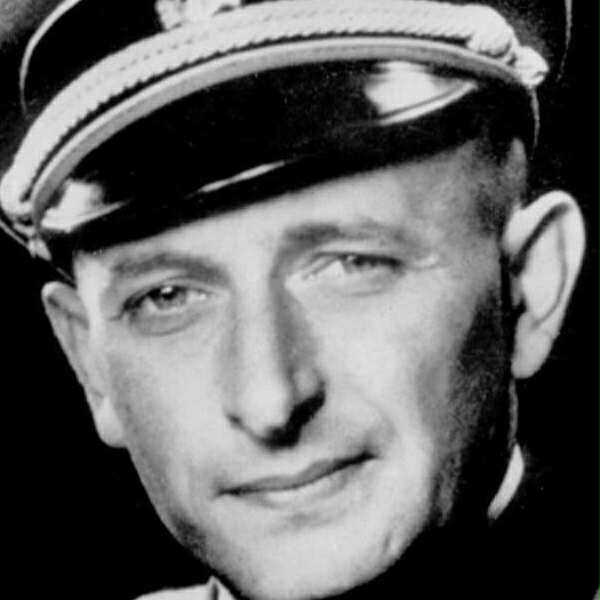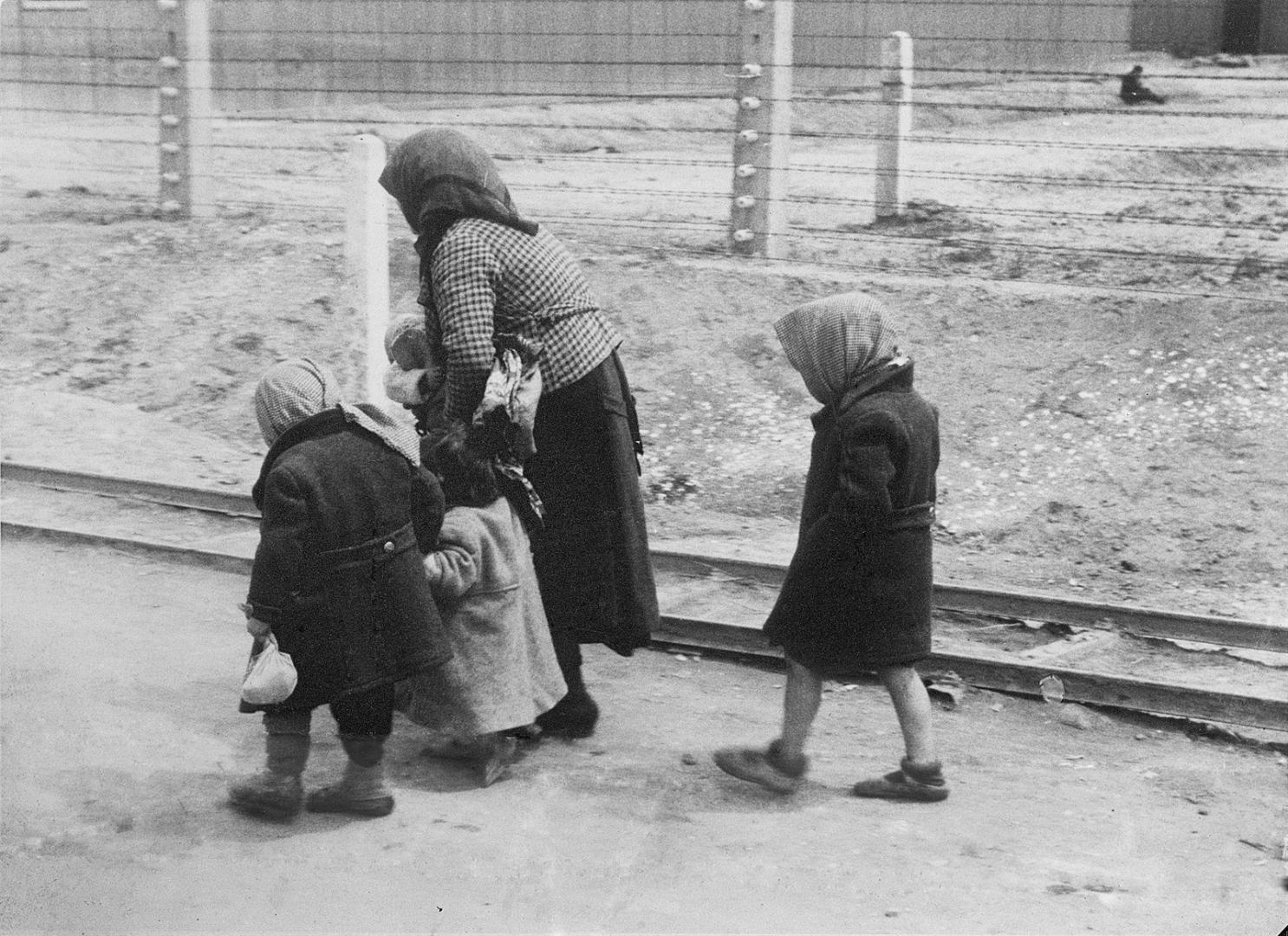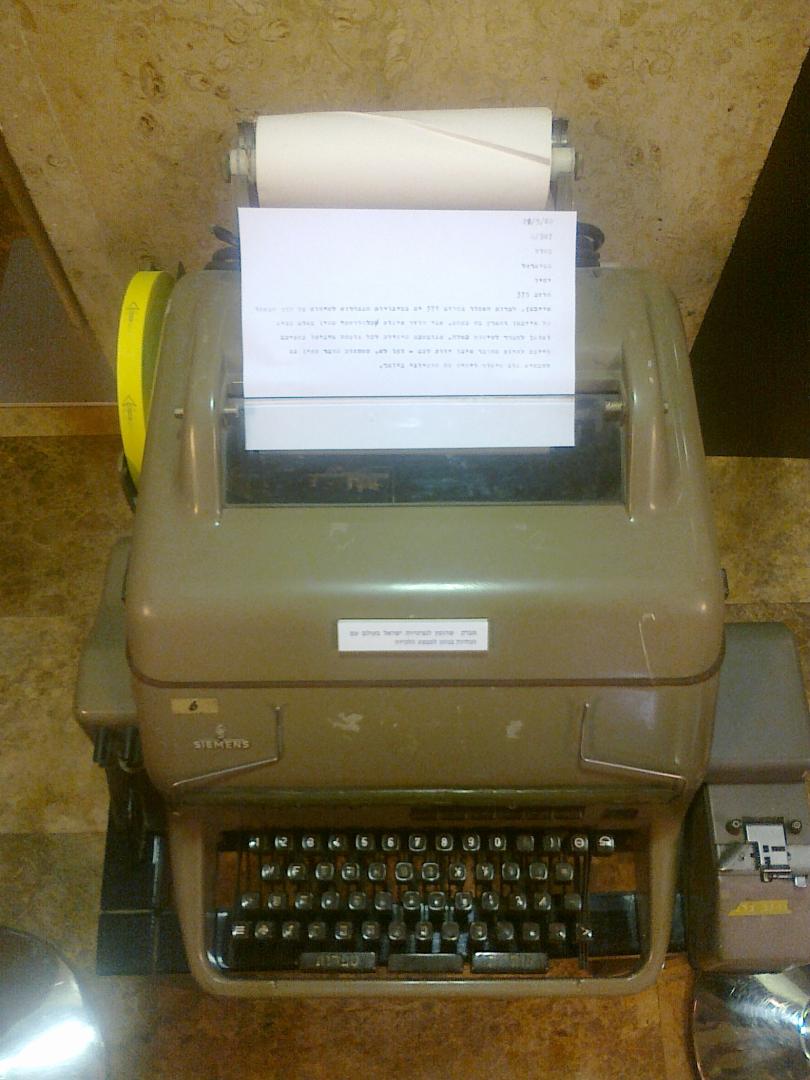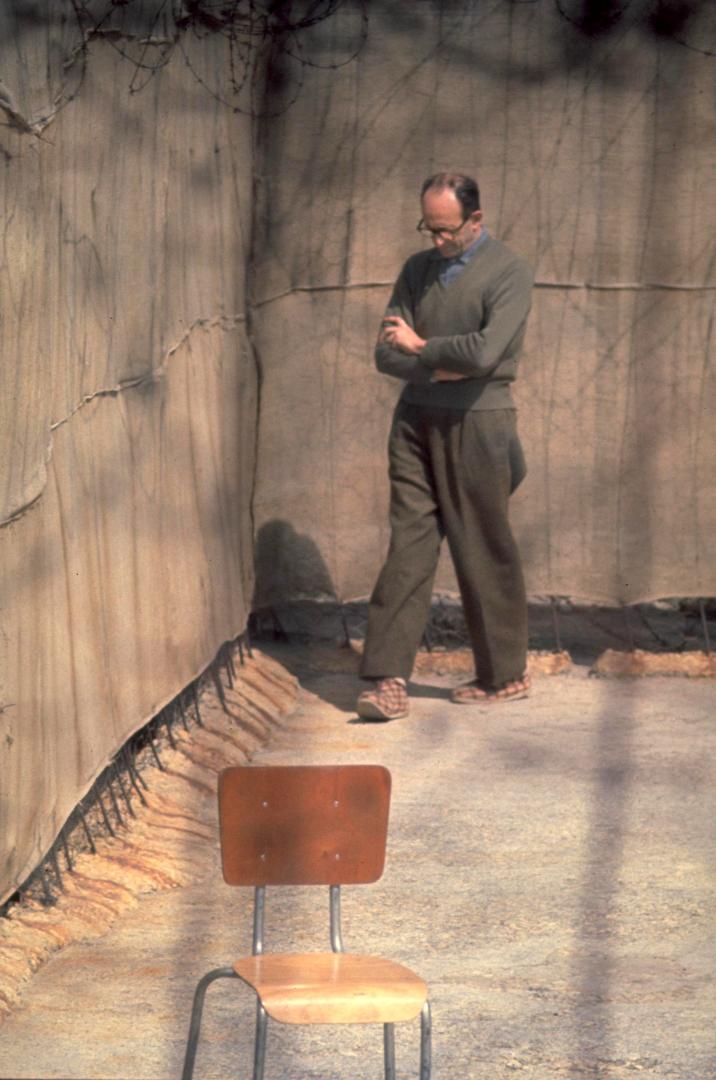
1906 - 1962
Otto Adolf Eichmann
Summary
Name:
Otto Adolf EichmannNickname:
The Architect of the Holocaust / Ricardo Klement / Otto Eckmann / Adolf Bart / Otto HeningYears Active:
1939 - 1945Birth:
March 19, 1906Status:
ExecutedClass:
Mass MurdererVictims:
5,000,000+Method:
Mass deportationDeath:
June 01, 1962Nationality:
Germany / Austria
1906 - 1962
Otto Adolf Eichmann
Summary: Mass Murderer
Name:
Otto Adolf EichmannNickname:
The Architect of the Holocaust / Ricardo Klement / Otto Eckmann / Adolf Bart / Otto HeningStatus:
ExecutedVictims:
5,000,000+Method:
Mass deportationNationality:
Germany / AustriaBirth:
March 19, 1906Death:
June 01, 1962Years Active:
1939 - 1945Date Convicted:
December 12, 1961bio
Otto Adolf Eichmann was born on 19 March 1906 in Solingen, in the then German Empire, the eldest of five children in a Protestant family. In 1914 his family moved to Linz, Austria, where Eichmann completed secondary schooling and vocational training; he later worked briefly for his father and then as a travelling sales agent for an oil company. During the 1920s and early 1930s Eichmann became increasingly involved with right‑wing nationalist groups and, in 1932, formally joined the Austrian branch of the Nazi Party and the SS. Economic dislocation and political turmoil in Austria and Germany shaped his early adult life and provided an entrée into party activism.
Eichmann’s administrative career advanced when, seeking to escape ordinary SS duties, he transferred into the Sicherheitsdienst (SD), the SS’s intelligence and security service. There he found work in an office that dealt with “Jewish questions” and related files. He studied Jewish organizations, Zionist activity, and migration patterns, acquiring rudimentary knowledge of Hebrew and Yiddish and developing a reputation within the bureaucracy as a competent organiser and clerk of Jewish affairs. By the late 1930s he was posted to Vienna and then Berlin, and he played a central role in structures the Nazi regime used to coerce and regulate Jewish emigration and dispossession. These bureaucratic responsibilities would later expand from facilitating forced emigration to organising deportations to occupied territories and extermination camps.
Eichmann’s bureaucratic ascent was inseparable from the radicalisation of Nazi policy. Initially, the regime combined legal restrictions, economic pressure, and violence to drive Jewish emigration. Eichmann’s agencies helped rig the administrative mechanisms that extracted Jewish property and imposed emigration terms. After the outbreak of war and especially following the decision to implement mass extermination, Eichmann’s remit broadened: he became the central logistical officer charged with arranging transports, coordinating between state ministries, SS offices, railway authorities, and local collaborators, and keeping the administrative machinery moving. His work was not the act of a lone field killer but of a highly efficient organiser of mass murder through deportation. The minutes he prepared for the Wannsee Conference (20 January 1942) and the policies he later implemented made him a key figure in the Final Solution.
Colleagues and witnesses later described Eichmann as a methodical, careerist bureaucrat who prized obedience, procedure, and successful logistics. Testimony and documentary evidence showed that he was instrumental in arranging the deportations that sent millions to ghettos and death camps. In 1944, after the German occupation of Hungary, Eichmann personally supervised the swift deportation of hundreds of thousands of Hungarian Jews to Auschwitz—an operation notable for its speed and the scale of loss. After Germany’s defeat Eichmann was captured by Allied forces but escaped from a detention camp; he adopted a false identity (Ricardo Klement) and lived in Argentina for many years until Israeli intelligence located and captured him in 1960.
murder story
As the architect of the Holocaust’s logistics, Eichmann personally coordinated the mass deportation and eventual deaths of millions of European Jews between 1939 and 1945, serving under the Nazi SS and directly answering to senior officials like Reinhard Heydrich, Heinrich Müller, and ultimately Heinrich Himmler.
When World War II broke out in September 1939, Nazi policy toward Jews shifted dramatically from forced emigration to deportation and internment. Eichmann, who had already established himself as an expert in "Jewish affairs," was appointed head of the RSHA’s Department IV-B4, specifically overseeing Jewish emigration and later, extermination logistics. In this position, he coordinated the forced displacement of Jews from Austria, Germany, Czechoslovakia, Poland, France, the Netherlands, Slovakia, Greece, Hungary, and other territories occupied by Nazi Germany.
At first, Nazi plans focused on deporting Jews to ghettos and designated regions. Eichmann was responsible for overseeing operations like the Nisko Plan, an early failed attempt to concentrate Jews in a "reservation" area in southeastern Poland. Deportees were sent by train to Nisko, where they were abandoned with no shelter, food, or water. Many died of exposure; others were forced east into Soviet-occupied territory. Though the plan was abandoned in late 1939, it laid the foundation for future, deadlier operations.
Eichmann's rise continued. By 1941, the Nazi regime’s objectives escalated toward outright extermination. Following the invasion of the Soviet Union in June that year, the SS Einsatzgruppen — mobile killing squads — began systematically murdering Jews behind the frontlines. Eichmann, while not present during these killings, received regular reports and was kept fully informed of their progress. His department worked in tandem with the Gestapo and SS to refine the next phase: mass deportation to extermination camps.
In January 1942, Eichmann attended the Wannsee Conference, a secret high-level meeting of Nazi leaders where the Final Solution — the complete annihilation of European Jewry — was formally coordinated. Eichmann served as Heydrich’s assistant, compiled statistical data on Jewish populations across Europe, and prepared the conference minutes, which documented Nazi plans for transporting Jews to death camps in the east. After this point, Eichmann's office became the central coordinator for all railway logistics, deportation schedules, and property seizures related to the Holocaust.
Eichmann’s department arranged thousands of train transports, often under horrific conditions. Jews were packed into cattle cars with little food or water, often for journeys that lasted days. Many died en route. Upon arrival at death camps such as Auschwitz, Treblinka, Bełżec, Majdanek, and Sobibor, most were immediately gassed, especially the elderly, children, and women. Eichmann’s role, though bureaucratic, was essential. He managed deportation rosters, timetables, and communication between the SS, German railways, and foreign collaborators. His focus was on maximum efficiency and minimal cost, not human life.
Perhaps Eichmann’s most notorious operation came in 1944, when Germany occupied Hungary. Up until then, Hungary’s Jews had been largely spared deportation. But under Eichmann’s leadership, over 437,000 Hungarian Jews were rounded up in just eight weeks, beginning in mid-May. Nearly all were sent to Auschwitz-Birkenau, where approximately 75% were murdered upon arrival. Survivors of these transports were subjected to forced labor or later gassed. Eichmann personally oversaw the logistics and was present in Budapest throughout the operation.

Despite international outcry and pressure from neutral countries and the Vatican, the deportations continued until July 1944, when Hungary's leader Miklós Horthy finally halted the operation. Still, Eichmann attempted to resume the deportations in July and August, even as the war began turning against Germany. His last known mass atrocity was the forced death marches of thousands of Hungarian Jews from Budapest to Austria, which began in late 1944. Prisoners were made to walk over 100 miles under brutal conditions, with thousands dying along the way.
With Germany collapsing in 1945, Eichmann ordered the destruction of incriminating records from Department IV-B4. He fled to Austria and lived under an alias, avoiding justice for 15 years. His role in the Holocaust had already been exposed during the Nuremberg Trials, with multiple witnesses naming him as a central figure in the Final Solution.
In 1960, Israeli Mossad agents captured Eichmann outside his home in Buenos Aires, Argentina, after he had been living under the name Ricardo Klement. He was secretly flown to Israel and stood trial for crimes against humanity, war crimes, and crimes against the Jewish people. His defense, that he was merely "following orders", was rejected by the court, which found him deeply complicit and morally responsible.

He was convicted on 15 counts and sentenced to death. Eichmann was executed by hanging on 1 June 1962, making him the only person ever officially executed by the Israeli state following a civilian trial. His last words were a mix of defiance and religious reference, and his ashes were scattered at sea, to ensure no place of martyrdom could be established.
